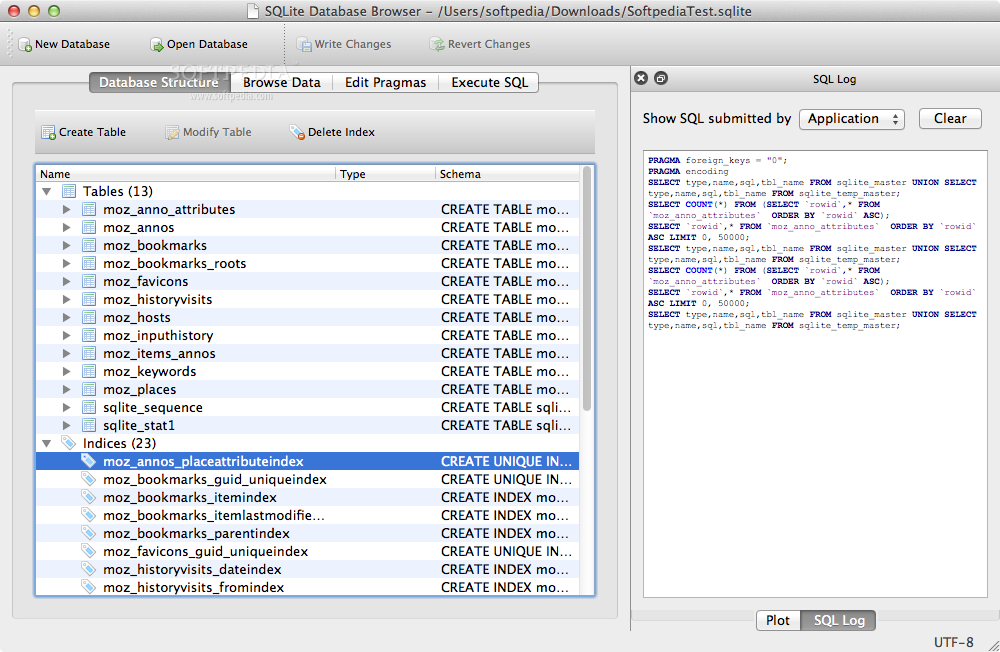

#Sqlite for mac install#
Run the command pip install flask_sqlalchemyĪgain run the command ‘python main.py’ warnings.warn(FSADeprecationWarning( * Serving Flask app 'main' (lazy loading) * Environment: production WARNING: This is a development server. Oopsss …again getting error like this Traceback (most recent call last): File "/Users/ashimasethi/Programming Stuff/just/flaskdb/main.py", line 3, in from flask_sqlalchemy import SQLAlchemy ModuleNotFoundError: No module named 'flask_sqlalchemy' Getting some error like this : Traceback (most recent call last): File "/Users/ashimasethi/Programming Stuff/just/flaskdb/main.py", line 1, in from flask import Flask, redirect, request,url_for,render_template ModuleNotFoundError: No module named 'flask'ĭont Worry Run the command : pip3 install flask If you are in env folder then come out using ‘cd.

Notice the use of quotes in the rows where the value of the data item themselves contain quotes in this case single quotes. The contents of which contains the expected output from the query. Yes you can have a file called “my.filename” if you want. The file will be created if needed or it will overwrite an already existing file, so exercise care. To direct the output to a file of my choice. quit which will end the SQLIte shell program. One you will have to use at some point is. There are in fact a large number of “dot” commands and they are all explained in the official SQLite documentation here. We can make the changes we want by using further “dot” commands. Notice that the NULL values in columns 6 and 8 are just left empty, two consequetive delimiters, just as they are in a csv file. There are some other changes to the output format that we might want to change as well.įor example change the field seperator from the default “|” to a comma and provide column headers. It is however more likely that not only are the results from the query somewhat larger,īut also we would prefer to save the output to a file for later use. If we just wanted to look at a small selection of data this The output from the query is displayed on the screen. Although easy to forget, it generally works to your advantage as it allows you to split a long query command across lines as you did in the DB Browser application. This is how the shell knows that You think the statement is complete. You must always terminate your select command with a “ ”.

Once the database is opened you can run queries by typing directly in the shell.sqlite suffix, otherwise a new database simply called SQL_SAFI would be created


 0 kommentar(er)
0 kommentar(er)
